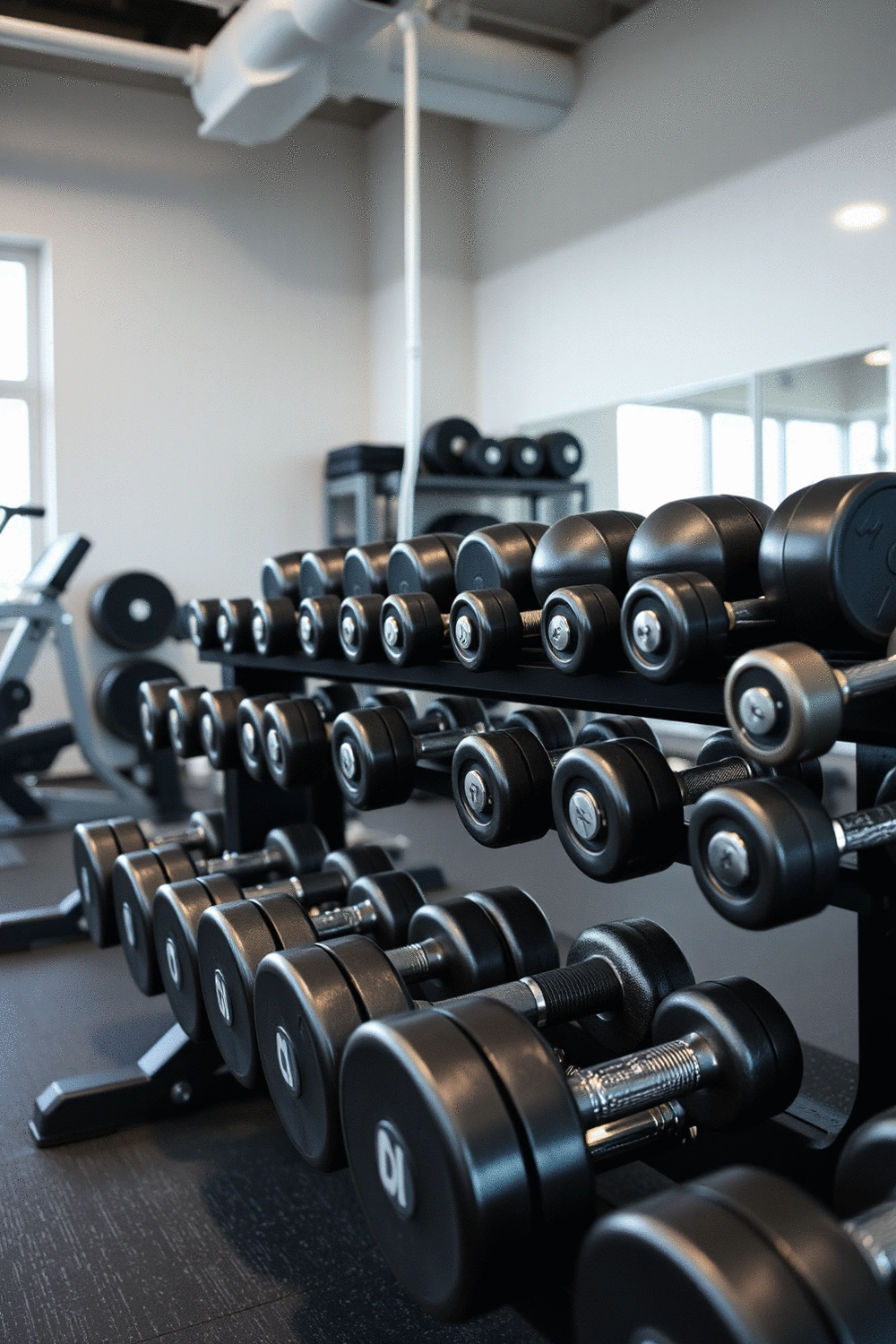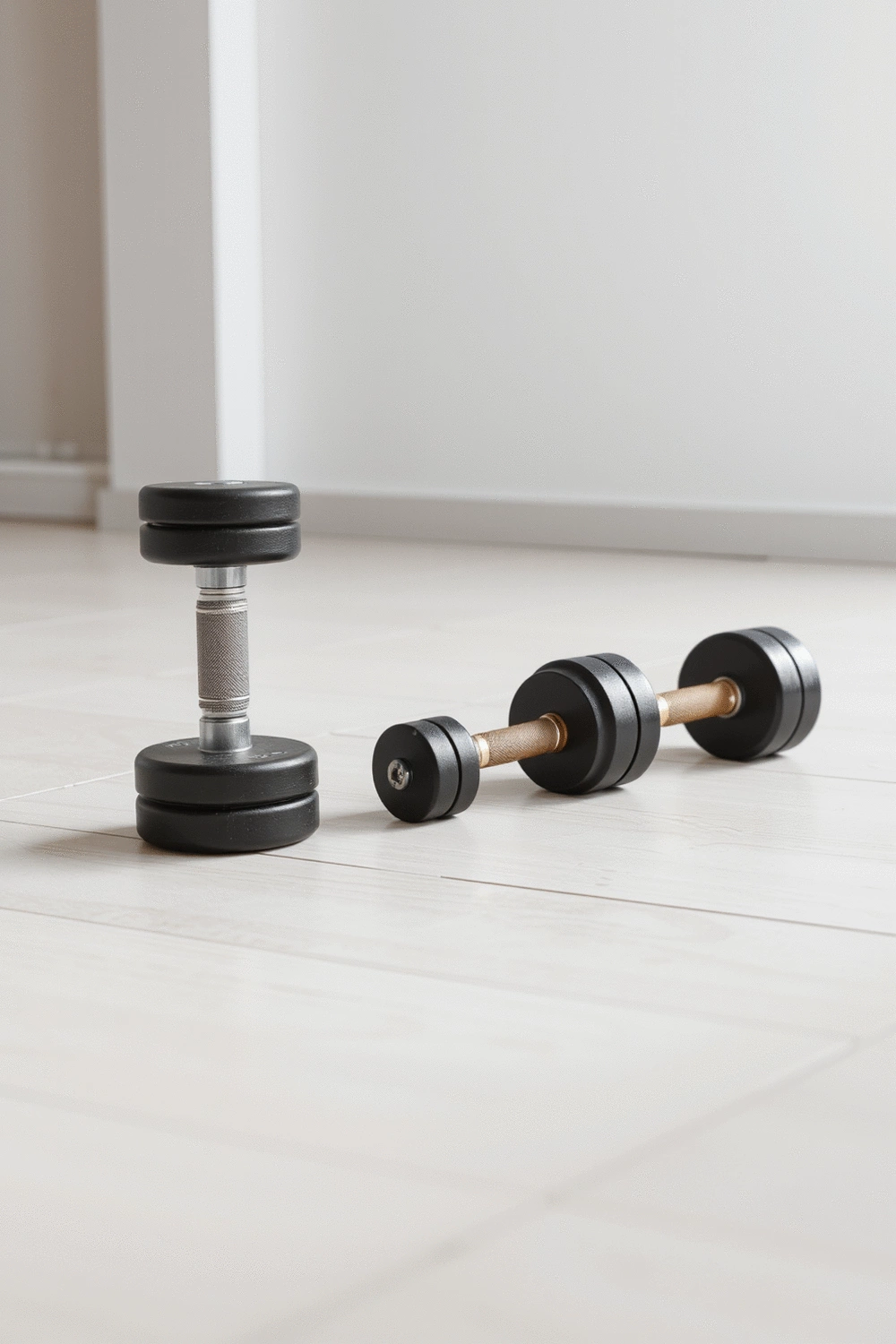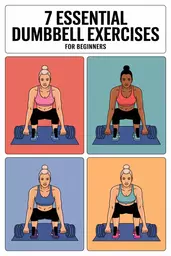
Find Your Perfect Dumbbell Weight Easily!
When selecting the right dumbbell weight, understanding your fitness level can be the key to effective training. This article emphasizes the importance of choosing appropriate weights for safe and efficient workouts, which can greatly enhance your fitness journey.
What You Will Learn
- Choosing the right dumbbell weight is essential for effective muscle engagement and injury prevention.
- Your fitness level—beginner, intermediate, or advanced—dictates the appropriate starting weights for your workouts.
- Common misconceptions include the belief that lifting heavy is the only way to achieve results; proper weight selection is about balance.
- Regular fitness assessments can help evaluate your strength and endurance, guiding your weight selection over time.
Understanding the Importance of Choosing the Right Dumbbell Weight
When it comes to home workouts, one of the most critical decisions is selecting the right dumbbell weight. This choice can significantly impact your progress and overall fitness journey. Many people underestimate how crucial this decision is and how it can affect your workout efficiency, strength gains, and even your motivation. Let’s dive into why choosing the right weight is vital!
First off, using the appropriate dumbbell weight helps you perform exercises correctly, ensuring you target the right muscle groups effectively. If your weights are too light, you won't challenge your muscles, and if they're too heavy, you risk injury and poor form. Finding that sweet spot is essential for both safety and progress!

Why Proper Dumbbell Weight Matters for Your Fitness Journey
Proper dumbbell weight selection is key to maximizing your fitness potential. When the weight is aligned with your current fitness level and goals, you'll see better results and stay motivated. Here are a few reasons why it matters:
- Improved Muscle Engagement: The right weight ensures you're engaging the right muscles during your workouts.
- Injury Prevention: Avoid the risk of strains and injuries by using weights that match your strength level.
- Enhanced Progress Tracking: Having a proper weight allows you to measure your gains accurately, keeping you motivated.
As a fitness enthusiast and certified personal trainer, I've seen how important it is for individuals to understand their limits. It’s not just about lifting heavy; it’s about lifting smart!
Common Misconceptions About Dumbbell Weight Selection
There are many myths surrounding dumbbell weight selection that can lead to confusion. For instance, some people believe that lifting heavy weights is the only way to build strength. However, this isn't entirely true. It's more about finding the right balance! Here are some misconceptions I often encounter:
- “I have to lift heavy to see results.”: Progress comes from appropriate weight for your level, not just sheer weight.
- “All exercises require the same weight.”: Different exercises and muscle groups require different weights for optimal results.
- “Once I find my weight, I can stick with it indefinitely.”: As you progress, your weights should change to ensure ongoing challenge and growth.
Understanding these misconceptions can empower you to make informed decisions. Remember, it’s not just about lifting; it’s about lifting smart and effectively!

Assessing Your Fitness Level for Optimal Dumbbell Weight
To choose the right dumbbell weight, you first need to assess your current fitness level. This involves understanding whether you're a beginner, intermediate, or advanced lifter. Your fitness experience directly affects what weights you should be using.
Let’s break it down further so you can find your ideal starting point. Knowing where you stand allows you to set realistic goals and helps in planning your fitness routine efficiently!
Defining Your Current Fitness Level: Beginner, Intermediate, or Advanced?
Identifying your fitness level helps tailor your workouts and weight selection. Here’s a quick guide to help you categorize yourself:
- Beginner: New to strength training or returning after a long break.
- Intermediate: Familiar with basic movements and have been training consistently for several months.
- Advanced: Experienced weight lifter with a solid foundation and looking to push limits.
Once you know where you fit, you can make informed choices about your dumbbell weight, ensuring that you're challenging yourself without risking injury.
Recommended Starting Weights for Beginners
If you're just starting, it’s important not to overdo it. I usually recommend starting with weights that feel manageable. For most beginners:
- Women: 5-10 lbs
- Men: 10-20 lbs
Test these weights to see how they feel during different exercises. The goal is to find a weight that allows you to complete your sets with proper form but still challenges you by the last few repetitions.

Weight Selection for Intermediate Lifters
As you progress, your muscle strength will increase, and so should your weights. For intermediate lifters, I suggest:
- Women: 10-20 lbs
- Men: 20-30 lbs
At this level, focus on enhancing your technique and incorporating more complex movements. It’s all about challenging yourself while maintaining good form!
Advanced Lifters: When and How to Progress Your Weights
For advanced lifters, it's time to push your limits. Here’s how to approach weight selection:
- Women: 20-35 lbs+
- Men: 30-50 lbs+
At this stage, consider incorporating progressive overload techniques to ensure continuous strength gains. This involves gradually increasing the weight or resistance over time, challenging your muscles to adapt and grow.
Fitness Assessments: Evaluating Your Strength and Endurance
Conducting regular fitness assessments can help you gauge your strength and endurance accurately. You can perform simple exercises like:
- Push-ups
- Bodyweight squats
- Plank holds
Seeing how many repetitions you can complete in good form provides valuable insights into your current fitness level. This practice not only shapes your weight selection but also keeps you motivated as you track improvements!
Frequently Asked Questions About Dumbbell Weight Selection
- Q: Why is choosing the right dumbbell weight so important?
- A: Selecting the appropriate dumbbell weight is crucial for effective muscle engagement, injury prevention, and maximizing your fitness potential. It ensures proper form and allows for consistent progress tracking.
- Q: How do I know if I'm a beginner, intermediate, or advanced lifter?
- A: Beginners are new to strength training. Intermediate lifters are familiar with basic movements and have trained consistently for several months. Advanced lifters have a solid foundation and significant experience.
- Q: What are the recommended starting weights for beginners?
- A: For beginners, women typically start with 5-10 lbs, and men with 10-20 lbs. The focus should be on maintaining proper form throughout the repetitions.
- Q: How should intermediate lifters select their dumbbell weights?
- A: Intermediate lifters can generally use 10-20 lbs for upper body exercises and 20-30 lbs for lower body exercises, focusing on enhancing technique and incorporating more complex movements.
- Q: When and how should advanced lifters progress their weights?
- A: Advanced lifters can use 20+ lbs for upper body and 30+ lbs for lower body. They should focus on progressive overload techniques, gradually increasing weight or resistance to continually challenge muscles and achieve strength gains.
- Q: What are some common misconceptions about dumbbell weight selection?
- A: Common misconceptions include believing that lifting heavy is the only way to see results, that all exercises require the same weight, and that you can stick with the same weight indefinitely. Proper selection involves balance, versatility, and progression.
- Q: How can fitness assessments help in choosing the right dumbbell weight?
- A: Regular fitness assessments (e.g., push-ups, bodyweight squats, plank holds) provide valuable insights into your current strength and endurance. They help you gauge your progress and determine when it's appropriate to increase your dumbbell weights.
Recap of Key Points
Here is a quick recap of the important points discussed in the article:
- Choosing the right dumbbell weight is crucial for maximizing workout efficiency and preventing injury.
- Proper weight selection enhances muscle engagement and allows for accurate progress tracking.
- Common misconceptions include the belief that heavier weights are always better and that one weight fits all exercises.
- Assess your fitness level (beginner, intermediate, advanced) to determine appropriate starting weights.
- Beginners should start with manageable weights, while intermediate and advanced lifters should progressively increase their weights for continued growth.







